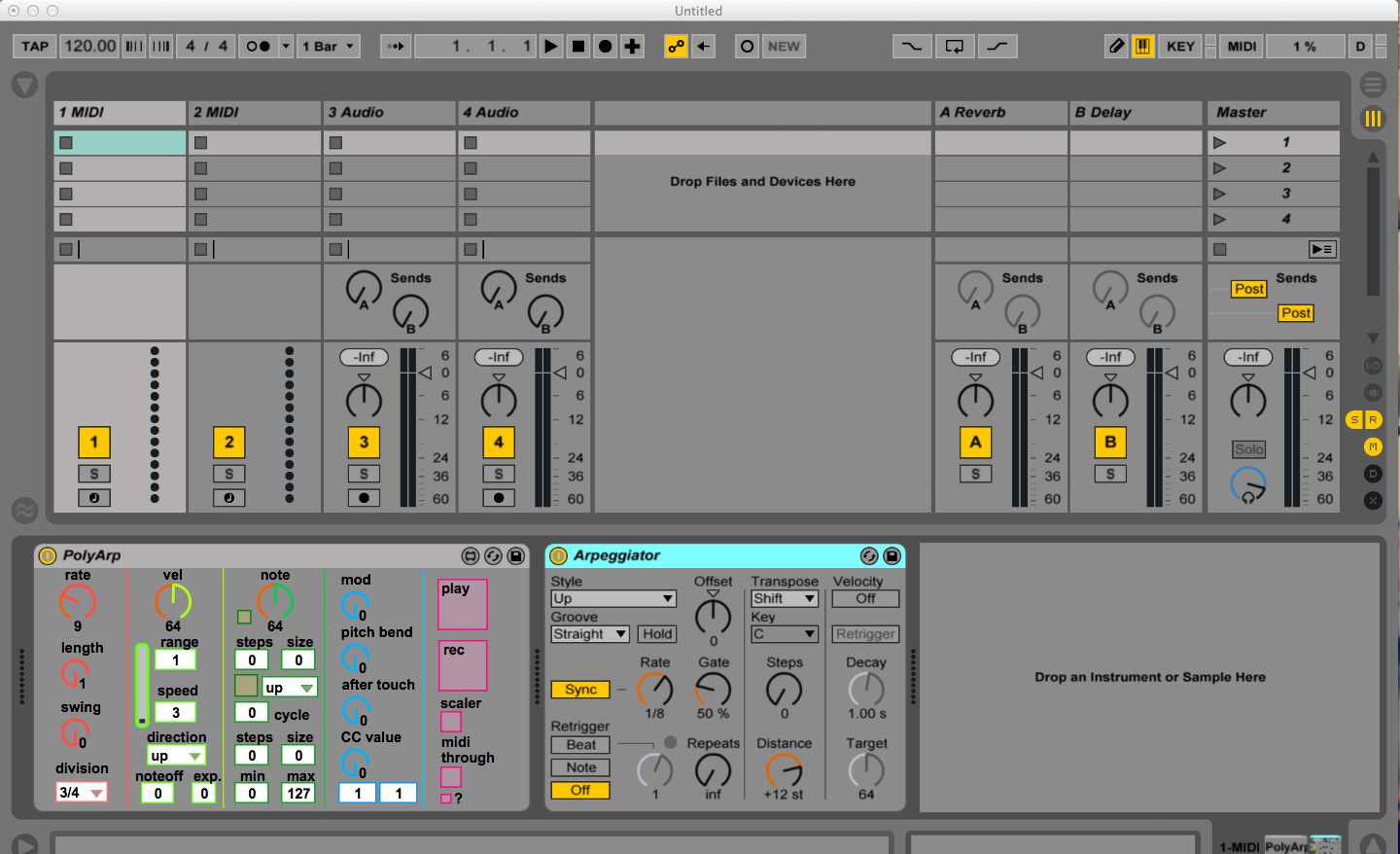Arpeggiators have been around since the ’80s and they have become a staple ingredient in many music genres. An arpeggiator is a MIDI effect that enables you to decompose a chord into its individual notes and play them back at a specific rate and in a specific order. Ableton’s own arpeggiator has many options that will let you design some sweet leads and rhythms. However, you might want to break away from the rigidity and lifelessness this effect produces out of the box. Here are a few tips:
Swing it
At first, the swing option might sound a little ‘un-groovy’ and definitely needs some tweaking to make it work. The main ‘groove’ amount in Ableton will let you control how swung you want your arpeggiated sounds to be. The default setting of 130{ed1b542e18a3fdb29a343f0bf5604cce6e71819c6df381e846b4d07cb9d1dc18} can be reduced for a more subtle result. You’ll find the ‘groove amount’ option when you open the groove pool.
Record it
One of my favourite ways to use arpeggiators is to map a few controls to my controller and change the settings in real time. I especially like changing the rate, the gate and the style, but try any of the options in there. Luckily, Ableton’s flexible routing system will let you record all the MIDI notes these live tweaks produce. Create a new MIDI track and open your I/O section – that’s CMD+I. In the MIDI from section of this new MIDI track, enable it to receive from the track where your arpeggiator is loaded. Arm it and start recording. You’ll see all the MIDI notes recorded into a MIDI clip. Once you have captured all your live play, drag the clip into the arrangement view and edit it to compile your favourite parts!
The Polyarp
Now here is a tool you have to try: This is Ableton’s arpeggiator on steroids. The intricacy of the settings will take you on a real musical journey. Let yourself be guided by the device and the most improbable results will arise. I particularly like the Velocity tweaks as they truly add the syncopation that adds real life to our patterns. The Polyarp also has an internal record buffer to automate the parameters within. Truth is, I barely use Ableton’s on board arpeggiator since I discovered this little bad boy! I advise you check the tutorial video the developer made and you’ll master it in no time. You can download the device from here.
The post Freddy’s Tech Tip 22: Humanised Arpeggiator appeared first on Music Production School Tutorials & News.
(c) Music Production School Tutorials & News – Read entire story here.
